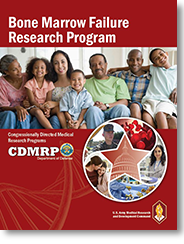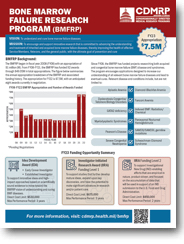Bone Marrow Failure
Vision – To understand and cure bone marrow failure diseases

» Click on Image to View Program Booklet

» Click on Image to View Strategic Plan

» Click on Image to View Program Overview
![]()
Congressional Appropriations
- $64.1 million
FY08-23 - $7.5 million
FY24

Funding
Summary
- 109 Awards in
FY08-23 - Recent Applications Recommended for Funding

Programmatic
Panels

Peer Review Participants
Last updated Monday, March 17, 2025














